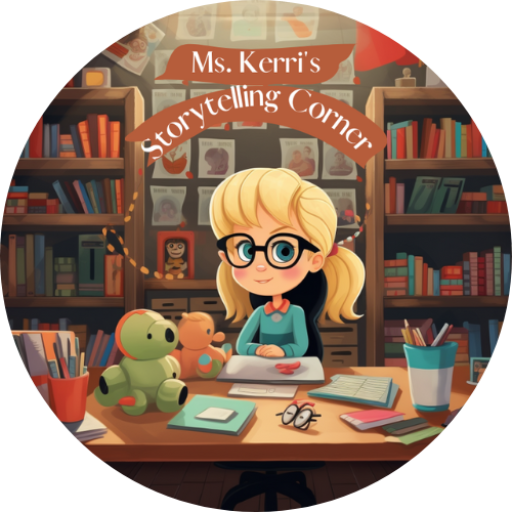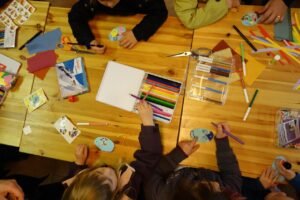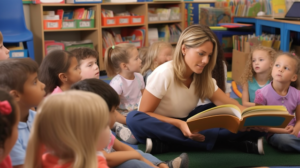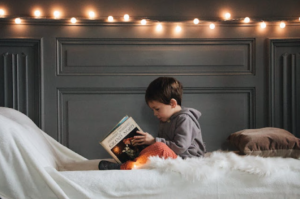Creative Arts and Crafts for Kindergarten: Inspiring Young Minds
Creative arts and crafts play a vital role in the holistic development of kindergarten children. Engaging in artistic activities not only provides an outlet for self-expression but also stimulates imagination, enhances fine motor skills, and fosters cognitive and social-emotional growth. Through various hands-on projects, kindergarteners can explore different mediums, experiment with colors, shapes, and textures, and collaborate with their peers, all while having fun. This article delves into the significance of incorporating creative arts and crafts into kindergarten education, explores a range of engaging activities, and offers valuable tips to create a stimulating and safe arts and crafts environment for young minds.
The Importance of Creative Arts and Crafts in Kindergarten Education
1.1 Fostering Creativity and Imagination
In the world of kindergarten, creativity is king (or queen!). Engaging in creative arts and crafts activities allows young minds to let their imaginations run wild. From painting to collaging, kindergarteners have the freedom to express themselves in unique and imaginative ways. And who knows, you might just have the next Picasso or Frida Kahlo in your classroom!
1.2 Developing Fine Motor Skills
Sure, kids might not be able to tie their own shoelaces yet, but engaging in art and crafts can help them develop those all-important fine motor skills. Whether it’s holding a paintbrush, cutting and pasting, or threading beads, these activities require precise finger movements, helping to strengthen those little muscles. So, while they’re busy making masterpieces, they’re also honing their motor skills like little finger ninjas.
Exploring Various Creative Arts and Crafts Activities for Kindergarteners

2.1 Painting and Drawing
Grab those paintbrushes and let your kindergarteners become mini Picassos! Painting and drawing are fantastic ways for children to unleash their creativity and develop their fine motor skills. Plus, who doesn’t love a fridge covered in vibrant artwork? It’s like having your very own art gallery at home.
2.2 Sculpting and Modeling
Move over, Michelangelo! Kindergarteners love getting their hands dirty with sculpting and modeling. Whether it’s molding playdough or shaping clay, these activities allow children to explore different textures and shapes, all while flexing their artistic muscles. Just be prepared for a few messy masterpieces!
2.3 Collage and Mixed Media
Collage and mixed media projects offer a delightful mishmash of creativity. From cutting and pasting colorful paper to adding feathers, buttons, and other found objects, kindergarteners can let their imaginations run wild. These projects not only encourage creativity but also help kids develop their fine motor skills as they manipulate and arrange various materials.
Enhancing Motor Skills and Coordination through Hands-on Crafts
3.1 Cutting and Pasting Activities
Scissors, glue, and a whole lot of creativity! Cutting and pasting activities are not only fun, but they also help kindergarteners refine their hand-eye coordination and fine motor skills. From snipping paper into shapes to assembling collages, these projects give little ones the chance to practice their scissor skills and create something to be proud of.
3.2 Threading and Beading Projects
Get ready to thread the needle (well, not an actual needle, unless you’re running a hardcore kindergarten sewing class). Threading and beading projects give kids the opportunity to work on their hand-eye coordination and fine motor skills while creating beautiful jewelry or decorations. Just be prepared for a few beads rolling around the floor – they tend to have a mind of their own!
Nurturing Imagination and Self-Expression through Artistic Projects

4.1 Storytelling and Puppetry
Lights, camera, action! Kindergarteners love bringing stories to life through storytelling and puppetry. Whether it’s creating finger puppets or crafting elaborate puppets with socks and googly eyes, these projects allow children to let their imaginations soar. Plus, it’s a wonderful way for them to express themselves and develop their communication skills. Move over, Hollywood!
4.2 Dramatic Play and Role-Playing
Curtain up! Dramatic play and role-playing activities give kindergarteners the chance to step into different characters’ shoes (metaphorically, of course). Whether they’re playing superheroes, doctors, or even chefs, these projects encourage imagination, creativity, and self-expression. So, don’t be surprised if you see a tiny thespian in the making – they might just be the next Meryl Streep!
Fostering Cognitive Development through Engaging Crafts and Activities
5.1 Sorting and Classifying Materials
When it comes to kindergarten crafts, sorting and classifying materials may not seem like the most exciting activity. But trust me, it’s a fantastic way to boost cognitive development in your little ones. By engaging them in sorting and classifying different objects, you’re helping them develop important skills like problem-solving, critical thinking, and categorization.
Encourage your kindergarteners to sort objects based on various attributes such as color, shape, size, and texture. You can use everyday items like buttons, beads, or even natural materials like leaves and pebbles. Not only will this activity keep them entertained, but it will also enhance their ability to recognize patterns and similarities.
5.2 Building and Construction Projects
Kindergarteners have an innate curiosity about how things work and love to get their hands dirty. Building and construction projects provide the perfect opportunity to unleash their creativity while honing their fine motor skills and spatial awareness.
Encourage your young builders to create structures using blocks, Legos, or even recycled materials like cardboard boxes and toilet paper rolls. Not only will they have a blast constructing their masterpieces, but they’ll also develop problem-solving skills and learn about balance and stability along the way.
Promoting Social and Emotional Skills through Collaborative Art Projects
6.1 Group Murals and Collaborative Paintings
Art has a unique way of bringing people together, and that holds true even for kindergarteners. Engaging in group murals and collaborative paintings not only boosts creativity but also promotes important social and emotional skills.
Encourage your little artists to work together on a large sheet of paper, allowing them to contribute their ideas and techniques. This activity fosters teamwork, enhances communication skills, and teaches them the value of respecting and appreciating others’ contributions. Plus, the end result will be a beautiful masterpiece created by their combined efforts.
6.2 Cooperative Craft Projects
Cooperative craft projects are another excellent way to foster social and emotional skills in kindergarteners. Whether it’s making a class quilt, creating a group collage, or designing a collaborative sculpture, these activities encourage teamwork, compromise, and problem-solving.
Divide your kindergarteners into small groups and give each group a specific task or theme. Encourage them to share ideas, work together, and create something unique as a team. Not only will they have a blast working collaboratively, but they’ll also develop a sense of camaraderie and learn the value of working as a group.
Integrating STEAM Concepts into Arts and Crafts for Kindergarten
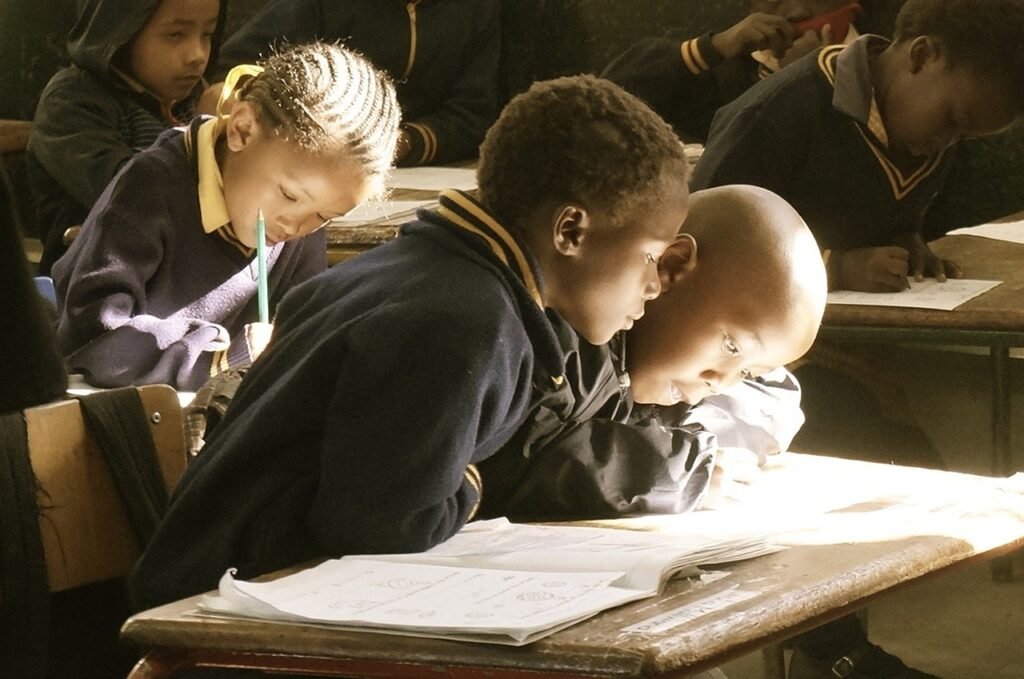
7.1 Exploring Science and Nature through Crafts
Who says arts and crafts and STEM subjects can’t go hand in hand? By integrating science and nature into your kindergarten crafts, you’re not only encouraging creativity but also promoting a love for scientific exploration.
Engage your little scientists by incorporating materials like feathers, leaves, or even recycled objects into their craft projects. Encourage them to observe and discuss the properties of these materials, fostering their curiosity and understanding of the natural world. This approach not only adds depth to their artistic creations but also enhances their scientific thinking skills.
7.2 Incorporating Math and Geometry into Artistic Projects
Mathematics can be a part of art too! By incorporating math and geometry into artistic projects, you’re giving your kindergarteners a well-rounded learning experience.
Encourage your young artists to explore shapes, patterns, and symmetry in their crafts. Use materials like colored paper, buttons, or beads to create geometric designs. This not only enhances their understanding of mathematical concepts but also helps them develop spatial awareness and attention to detail.
Tips for Creating a Stimulating and Safe Arts and Crafts Environment for Kindergarteners

8.1 Organizing and Storing Art Supplies
Creating a stimulating arts and crafts environment for kindergarteners starts with organizing and storing art supplies in an accessible and orderly manner. Use labeled containers or drawers to keep materials like crayons, markers, and scissors neatly organized. This not only makes it easier for the children to find what they need but also helps develop their sense of responsibility and organization.
8.2 Ensuring Safety during Crafts and Activities
While arts and crafts can be a lot of fun, safety should always be a priority. Make sure to provide child-safe scissors, non-toxic art supplies, and appropriate tools for their age group. Supervise the children closely during activities involving potentially dangerous materials or equipment. And don’t forget to remind them about the importance of cleaning up and putting away materials properly to avoid any accidents.
Remember, creating a safe and stimulating arts and crafts environment allows kindergarteners to explore their creativity freely while developing important skills along the way. So let their imaginations run wild and watch as they create beautiful masterpieces while learning valuable lessons!
In conclusion, creative arts and crafts provide invaluable opportunities for kindergarteners to explore their creativity, develop essential skills, and express themselves freely. By integrating various artistic projects into kindergarten education, educators can inspire young minds, nurture their imagination, and foster holistic development. The benefits of engaging in creative arts and crafts extend beyond the classroom, influencing children’s cognitive, social, and emotional growth. As we continue to prioritize the importance of well-rounded education, let us recognize and embrace the transformative power of creative arts and crafts in shaping the minds of our youngest learners.

FAQ
1. Why are creative arts and crafts important for kindergarten education?
Creative arts and crafts are important for kindergarten education as they stimulate imagination, enhance fine motor skills, foster cognitive development, and promote social-emotional skills. They provide a platform for self-expression, encourage problem-solving and critical thinking, and allow children to explore their creativity in a hands-on and engaging manner.
2. How can creative arts and crafts activities benefit kindergarteners?
Creative arts and crafts activities benefit kindergarteners in various ways. They help develop fine motor skills, hand-eye coordination, and spatial awareness. These activities also nurture self-confidence, encourage self-expression, and boost imagination. Through collaborative projects, children learn to communicate, share ideas, and work as a team, promoting social skills and emotional well-being.
3. Can creative arts and crafts be integrated with other subjects in kindergarten?
Absolutely! Creative arts and crafts can be seamlessly integrated with other subjects in kindergarten, such as science, math, and language arts. For instance, children can create art projects inspired by nature or conduct experiments using art materials for hands-on scientific exploration. Math concepts like shapes, patterns, and measurements can also be incorporated into artistic projects, making learning more engaging and interactive.
4. How can educators create a safe arts and crafts environment for kindergarteners?
Educators can create a safe arts and crafts environment for kindergarteners by ensuring proper supervision, using child-friendly materials, and establishing clear safety guidelines. They should also organize and store art supplies in an accessible and organized manner and regularly inspect them for any potential hazards. Educators must prioritize safety measures to ensure that children can freely express their creativity in a secure and protected setting.


Ms. Kerri’s Corner provides a exciting virtual space for preschool learning. Through a variety of engaging activities, she exposes young minds to early math, literacy, science and social-emotional skills in a developmentally appropriate way. Centers for blocks, art, books and music allow children to explore hands-on learning at their own pace. Guided lessons subtly introduce number sense, letter sounds and narrative thinking. Careful observation gives insight into each child’s progress across domains. Viewers are also invited to participate, reinforcing that their ideas are valued. By making learning fun yet purposeful, Ms. Kerri lays the groundwork for future academic success while fostering creativity and imagination. Her program offers preschoolers valuable screen-based learning experiences.
